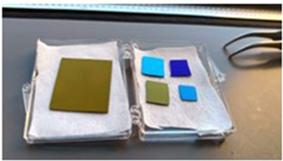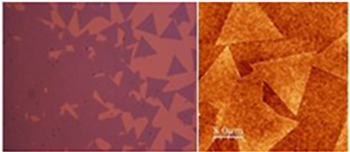|
Title Professor Education Ph.D. Physics – University of Pittsburgh, 1996 Previous Experience Dr. Gougousi joined UMBC after postdoctoral appointments at North Carolina State University and the University of Maryland College Park. Professional Interests My research interests lie in the area of nanostructured materials, thin films, and interfaces. As the critical dimension of nanodevices reaches the atomic scale, interface phenomena become critical because they define the operation of nanodevices. As a result, understanding the atomic-level mechanisms that define the formation of heterogeneous interfaces is a critical challenge in advanced materials systems. We investigate the deposition mechanisms and properties of thin films, interfaces, and other low-dimensional materials. We have worked on dielectrics, semiconductors, photonic materials, and 2D materials such as transition metal dichalcogenides. We use both chemical (Atomic Layer Deposition) and physical vapor deposition methods to produce thin films on a variety of substrates and to study their properties. Atomic layer deposition permits atomic level of the film thickness and morphology and achieves very smooth, uniform, conformal films even on very high aspect ratio structures. Although ALD is usually thought of as a modified version of Chemical Vapor Deposition (CVD), it exhibits some unique features: film formation is achieved by alternating exposure of a surface to the vapor of two chemical reagents that react in a complementary, self-limiting manner. Complementary means that each of the two reagents must prepare the surface for reaction with the other chemical so the process is cyclical. The dependence of the deposition on favorable surface chemistry can be exploited to achieve selective deposition that is the basis of the so-called “bottom-up” approaches for the formation of nanostructures. Publications https://scholar.google.com/citations?user=YRJJ6wIAAAAJ&hl=en |
  Top: Nitrogen-doped TiO2 films that exhibit very strong nonlinear optical response. The difference in color is due to variations in composition. Bottom: Optical and AFM images of MoS2 monolayer flakes. The thickness of these flakes is 0.7 nm. |
